1. HD 133131
This wide-set double-star system possesses a total of three Jovian (gas-giant, like Jupiter or Saturn) exoplanets. Unlike most multiple-star systems, where normally only one of the stars harbors an exoplanet, in this system both stars have at least one world in orbit.
Read more about the HD13313 system: Johanna K. Teske, et al (2016). The Magellan PFS Planet Search Program: Radial Velocity and Stellar Abundance Analyses of the 360 AU, Metal-Poor Binary “Twins” HD 133131A & B Astronomical Journal, arXiv: 1608.06216v2
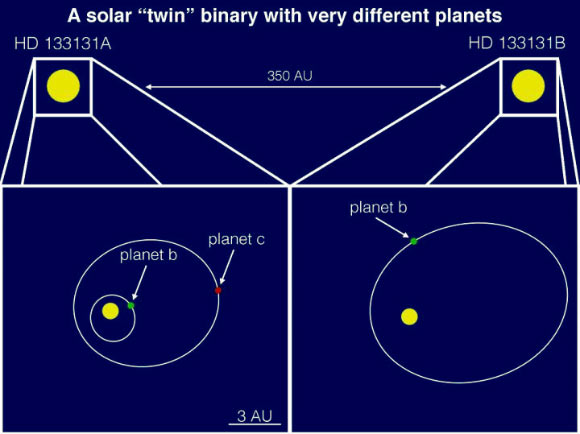
2. Kepler 47
A circumbinary star system (a system where a planet orbits two stars instead of just one star, as in the case of the Solar system); the Kepler 47 system is unique in that two exoplanets orbit this double-star system, instead of just one. Both exoplanets are likely Jovian, and as is typical of circumbinary systems these two worlds also orbit near to their hosts’ Habitable Zone (HZ, where water can exist on a planet’s surface as a liquid) – maybe it has something to do with gravity?
Other Keplerian circumbinary systems include 16, 34, 35, 38, and more recently also 413, 453, 1647.
The published findings for Kepler 47 can be found here: Orosz, J., Welsh, et al. (2012). Kepler-47: A Transiting Circumbinary Multiplanet System Science, 337 (6101), 1511-1514 DOI: 10.1126/science.1228380
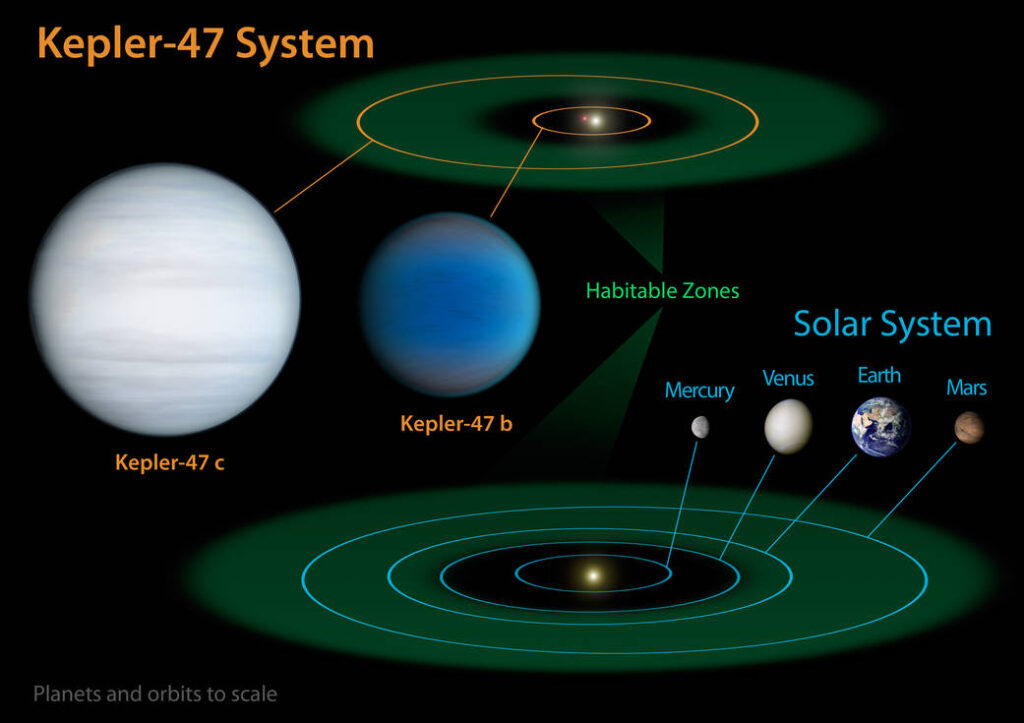
3. Methuselah:
This system, like Kepler 47, was also listed in my first-ever UA post, “Tatooine”, and is unique in being one of the oldest exoplanets (planet age-wise, not discovery date-wise) ever confirmed to exist. The Methuselah system is also unique in that the Jovian world in question orbits two dead stars: a white dwarf, and a pulsar (a type of neutron star).
Read more here: R. Di Stefano, & A. Ray (2016). Globular Clusters as Cradles of Life and Advanced Civilizations ASTROPHYSICAL JOURNAL, 827 (1) arXiv: 1601.03455v1
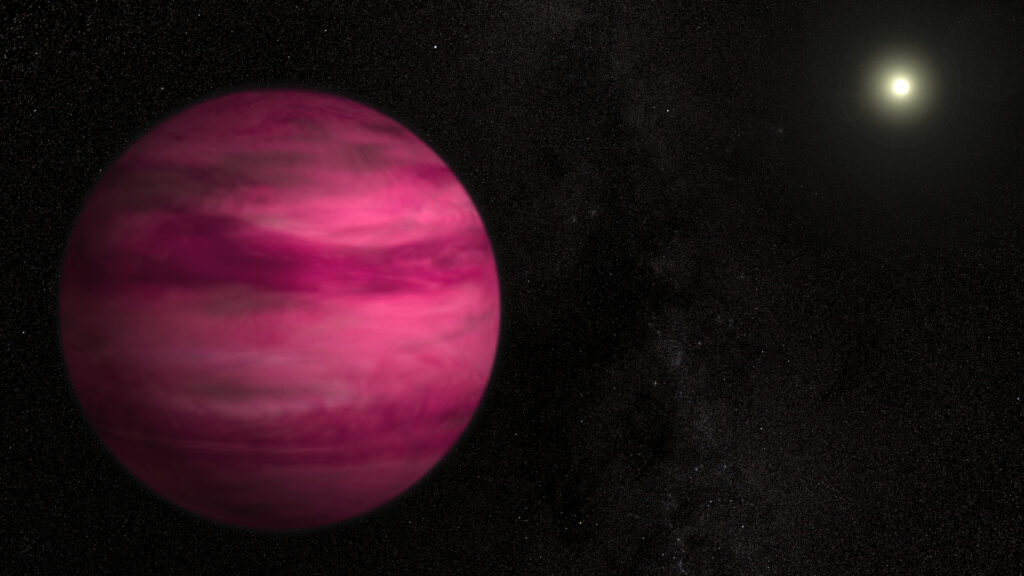
4. 16 Cygni B
The Jovian exoplanet orbiting 16 Cygni B has one of the most eccentric orbits known. Its orbit reaches its maximum at about Jupiter-distance, while its nearest approach is far inside Mercury’s own orbit. It spends some time in B’s HZ, though….
Read more about the Jovian exoplanet: Marcelo Tucci Maia, Jorge Melendez, & Ivan Ramirez (2014). High precision abundances in the 16 Cyg binary system: a signature of the rocky core in the giant planet ASTROPHYSICAL JOURNAL LETTERS , 790 (2) arXiv: 1407.4132v1
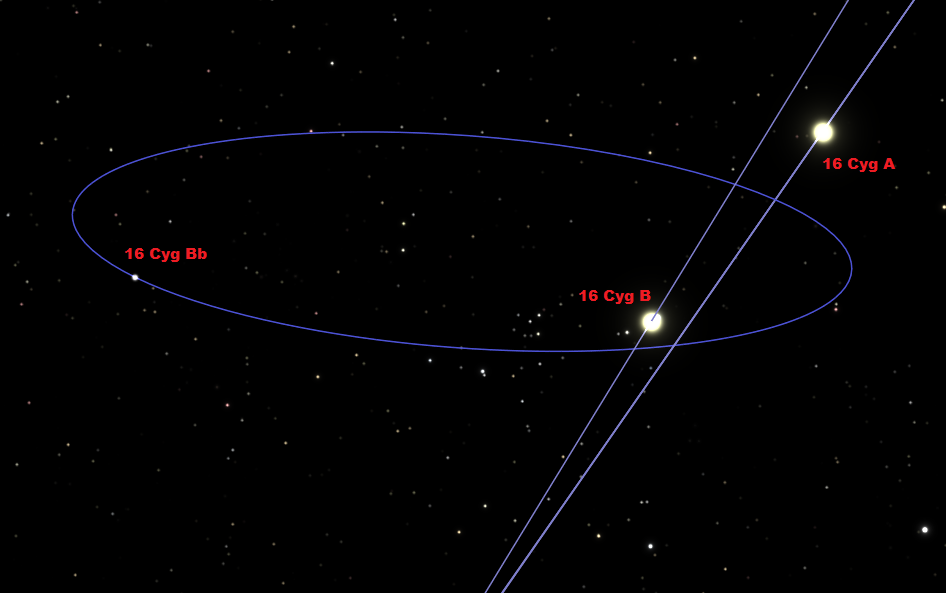
5. Proxima Centauri
Aside from Proxima being the nearest star to our Sun (the Sun is the nearest star to Earth), this red dwarf also harbours the nearest exoplanet to Earth that also happens to be Earth-like and reside within its HZ. This world has the best shot at being the first exoplanet we Humans will explore.
Read more about Proxima Centauri: Anglada-Escudé, G.,et al (2016). A terrestrial planet candidate in a temperate orbit around Proxima Centauri Nature, 536 (7617), 437-440 DOI: 10.1038/nature19106
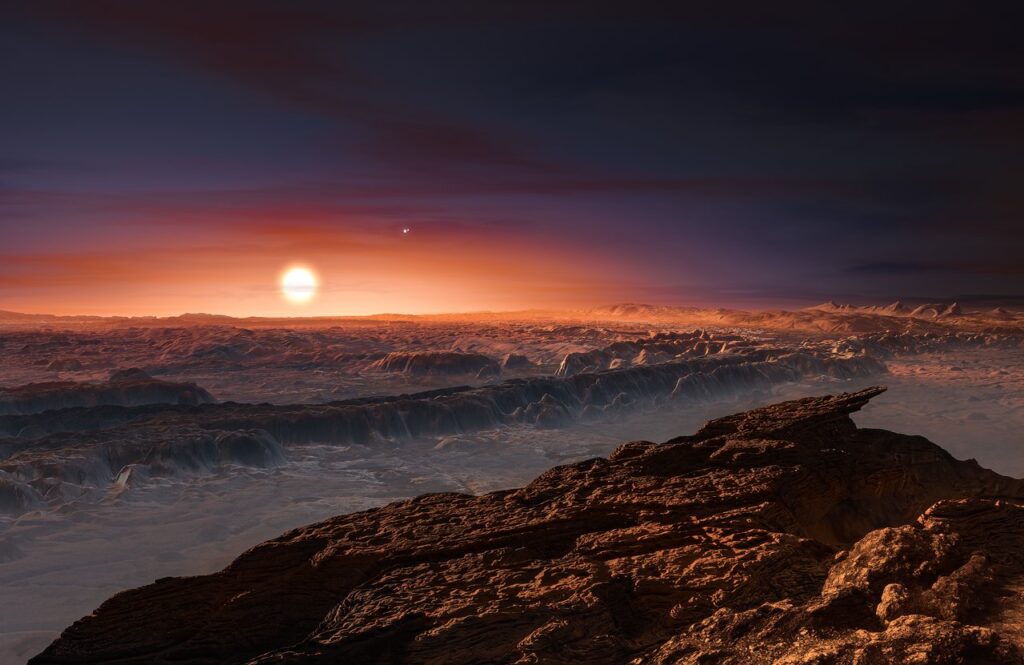
6. Kepler 62
The note-worthiness of this system is that, thus far, it contains the highest number of Earth-like worlds within the star’s HZ. Once upon a time, this title was held by Gliese 667 C (with four Super-earth’s in its HZ; “Gliese” is also often shortened to “GJ”) – not anymore, as GJ 667 Ce, f have since been redacted. GJ 581 also once held this title (with three), too, momentarily, until 581 g was also redacted.
More information about Kepler 62 can be found here: Borucki, W, et al. (2013). Kepler-62: A Five-Planet System with Planets of 1.4 and 1.6 Earth Radii in the Habitable Zone Science, 340 (6132), 587-590 DOI: 10.1126/science.1234702
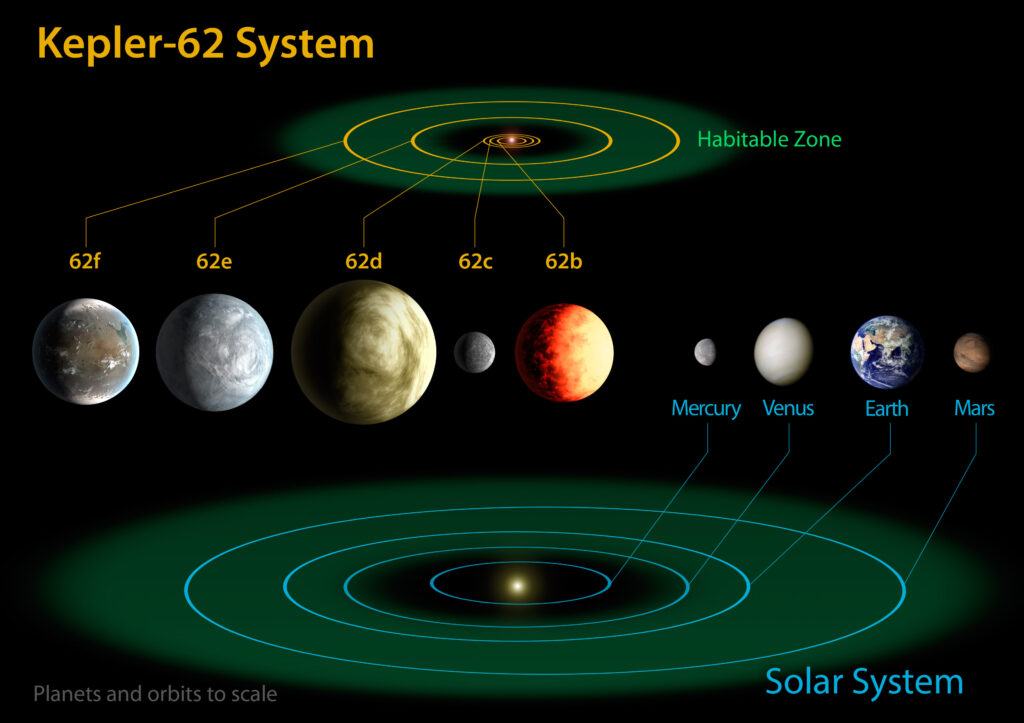
7. HD 10180
While Kepler 62 has the most Earth-like worlds in an HZ known, HD 10180 has the most exoplanets in orbit about it in total (our Solar System still holds the record for total planets in general, with eight). Seven exoplanets have thus far been confirmed, with the slightest chance of two more worlds being present; if these two other worlds do indeed end up being confirmed, then HD 10180 would at that moment hold the record for most planets in orbit in our known Universe.
More about HD 10180: Stephen R. Kane, & Dawn M. Gelino (2014). On the Inclination and Habitability of the HD 10180 System ASTROPHYSICAL JOURNAL, 792 (2) arXiv: 1408.4150v1
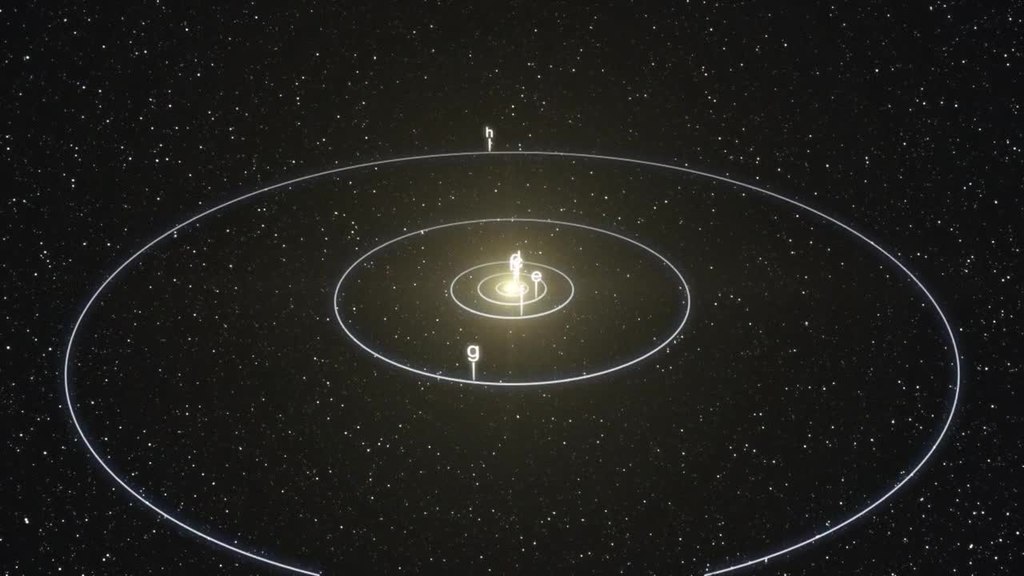
Sources:
SciNews– Astronomers Discover Three Giant Exoplanets in ‘Twin’ Binary System.
SciNews – Earth-Mass Exoplanet Found in Habitable Zone around Proxima Centauri
SciNews– Earth-like Planets Found in Habitable Zone around Kepler-62, Kepler-69
Space Telescope: Jovian Planet in Globular Cluster M4: Calm Bystander in Stellar Drama.
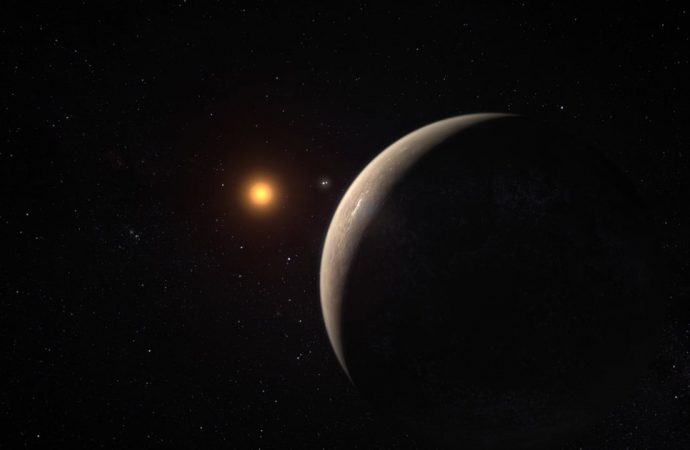


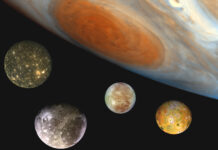
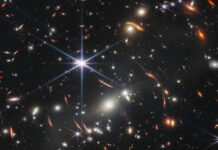
Where proxima-b could possibly have an oxygenated atmosphere!